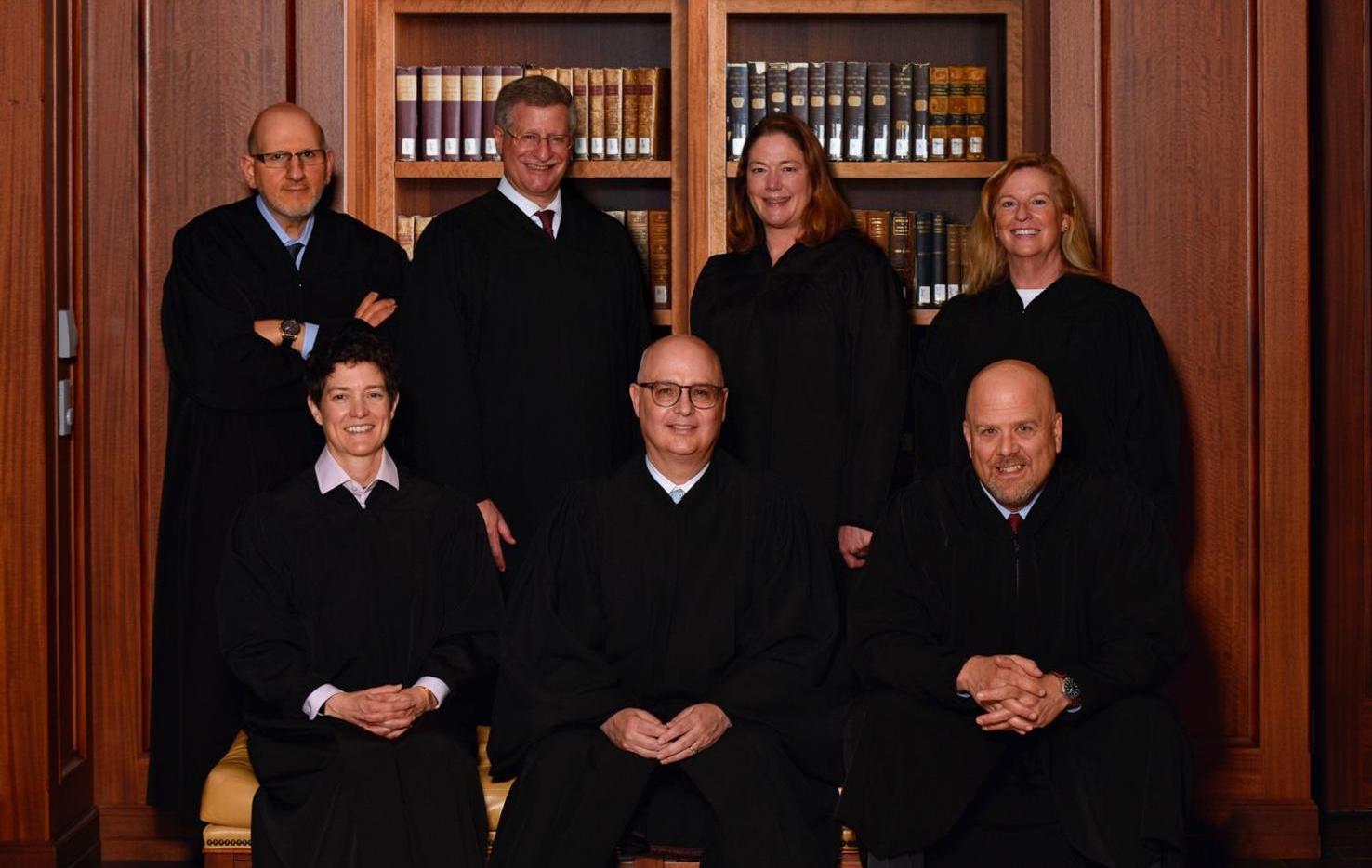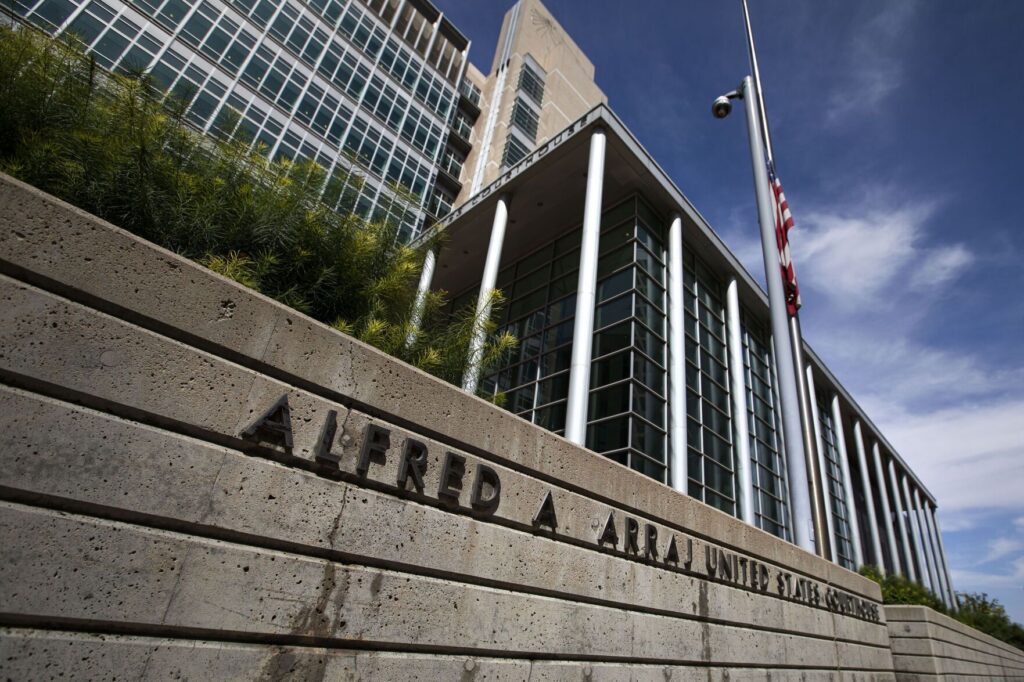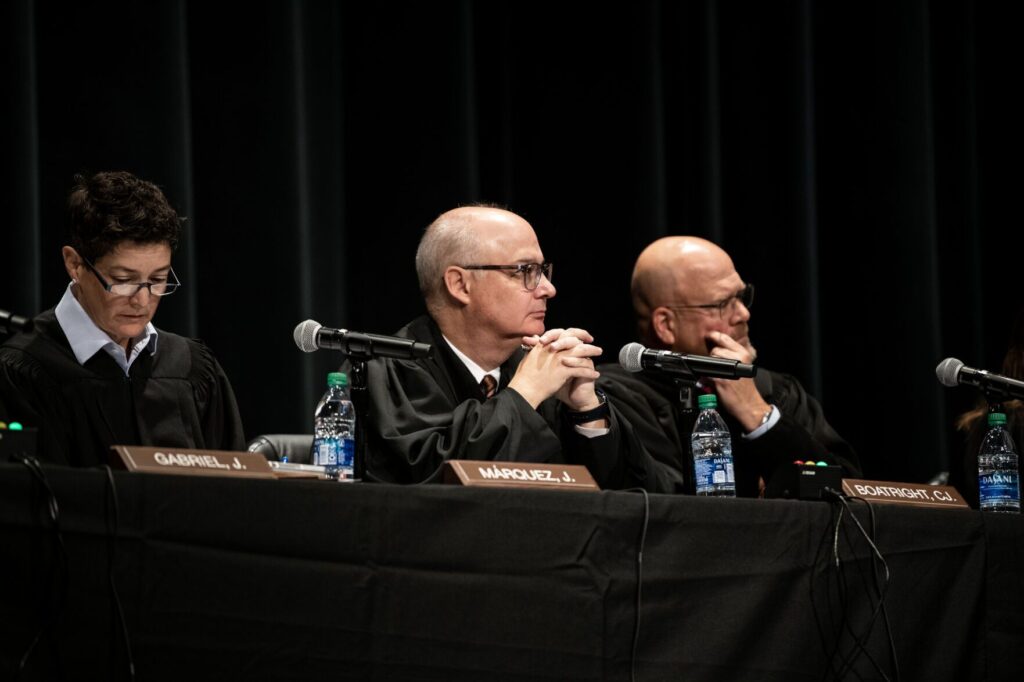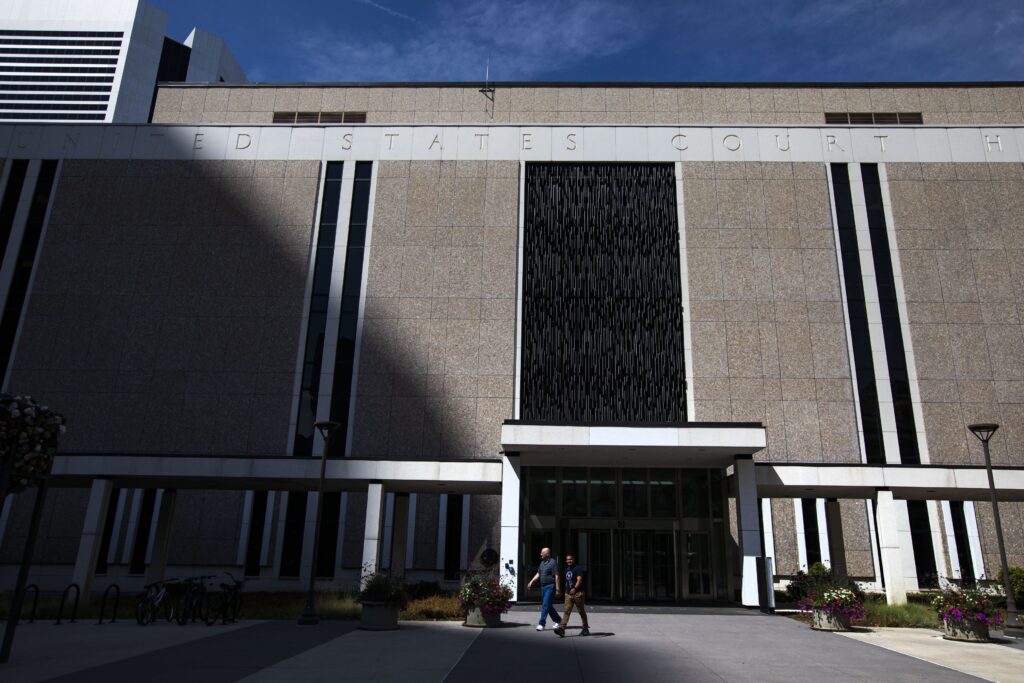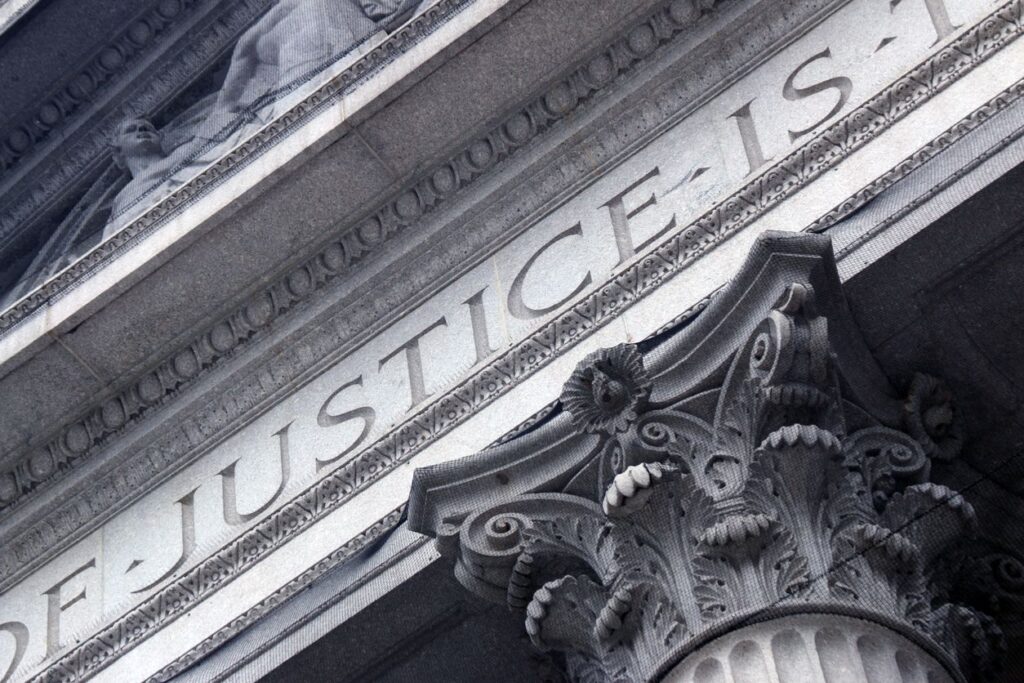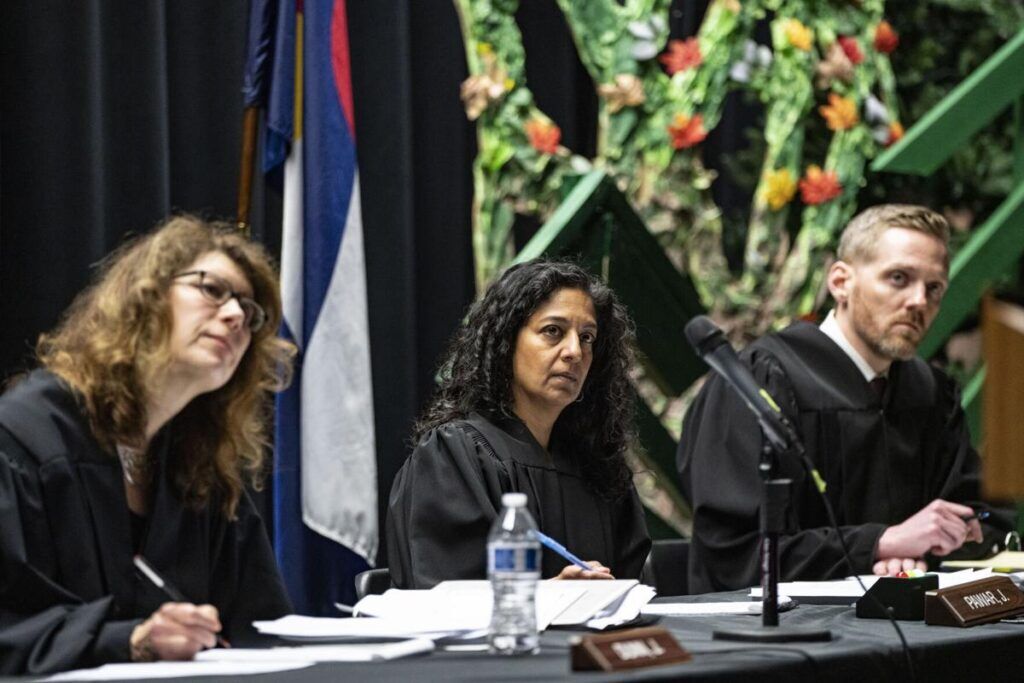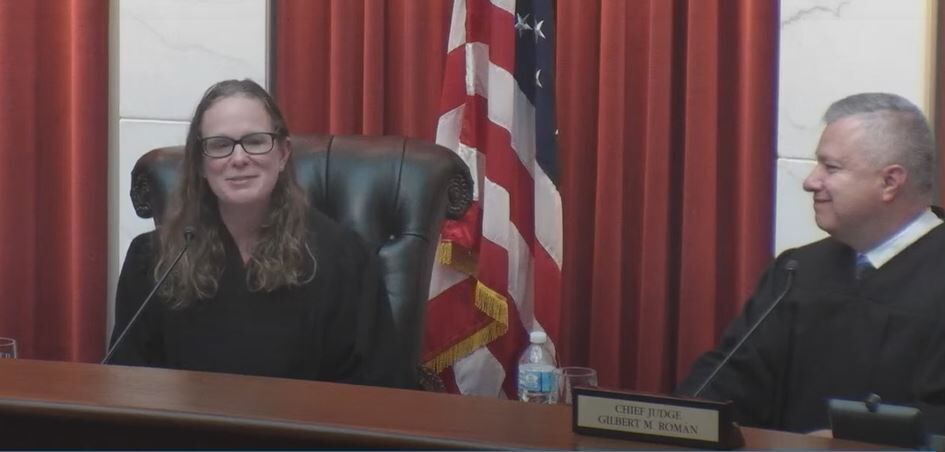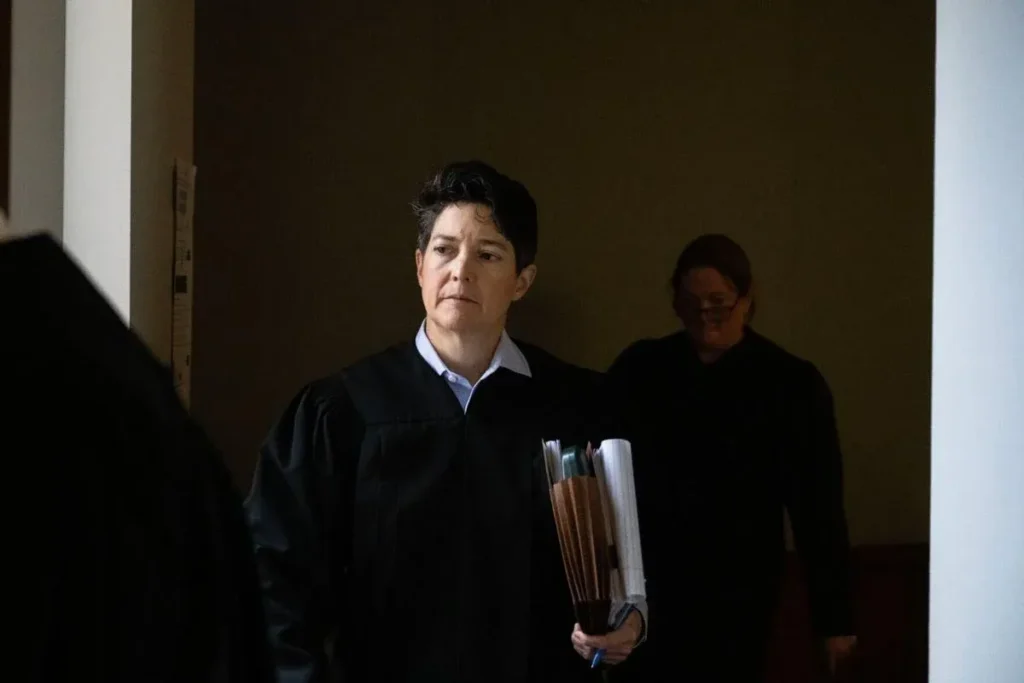State Supreme Court draws line on unacceptable use of analogies by trial judges
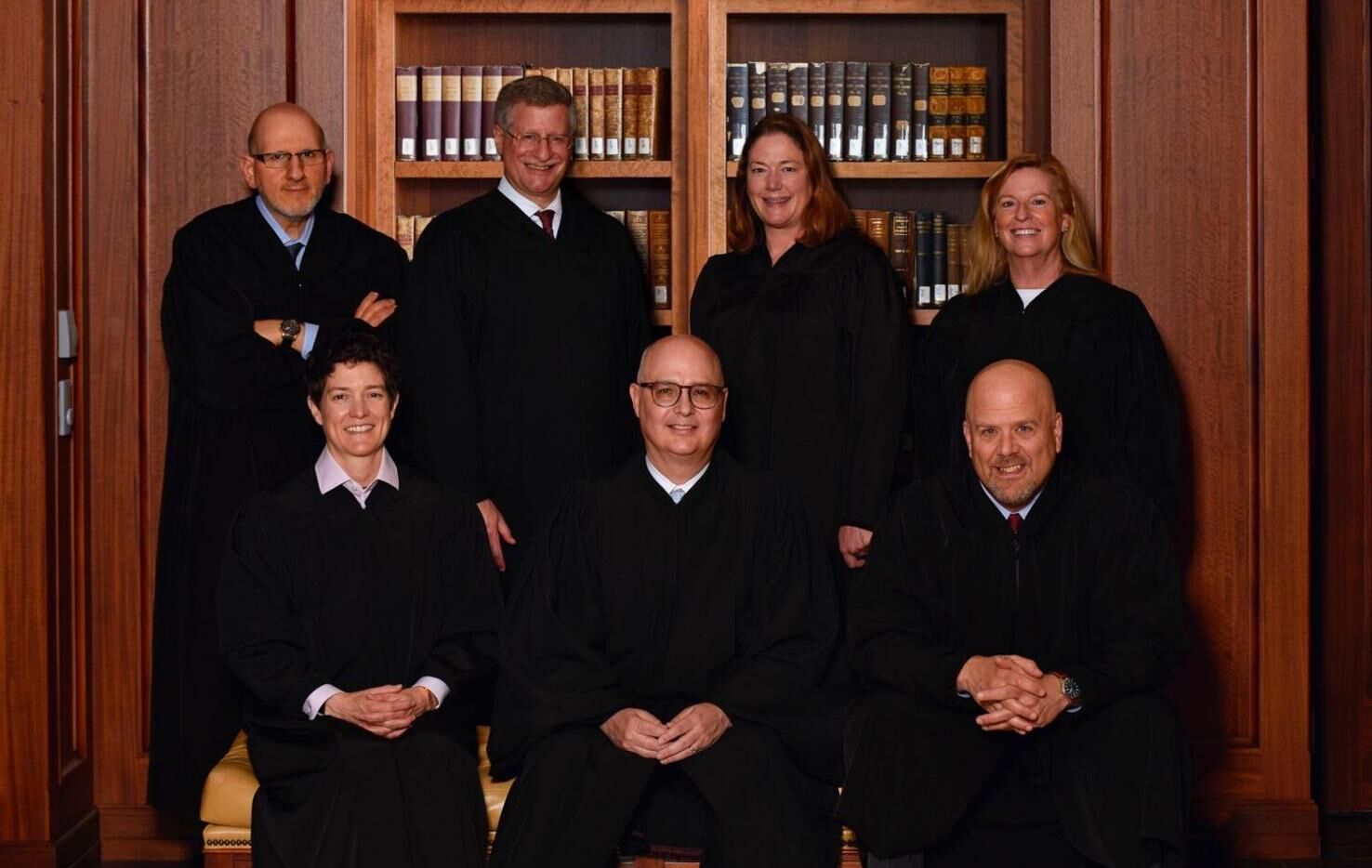
The Colorado Supreme Court has determined that trial court judges who attempt to define the concept of reasonable doubt using illustrations or analogies to familiar concepts may, in fact, be committing an error that requires reversal of a defendant’s conviction.
The justices’ conclusion in a pair of appeals on Monday follows a long string of cases in which the state’s second-highest court has repeatedly warned judges to avoid using folksy explanations or concrete illustrations of reasonable doubt to help jurors understand one of the most fundamental concepts of criminal law. Defendants who appealed their convictions argued that such analogies lowered the burden of proof for prosecutors by inaccurately stating what reasonable doubt required.
Only a handful of judges on Colorado’s Court of Appeals had ever found such illustrations problematic enough to reverse a conviction. Now, the Supreme Court has laid down a framework for doing so.
“We now conclude that in considering whether a court’s statements to a jury regarding the meaning of ‘reasonable doubt’ (whether in formal instructions or not) unconstitutionally lowered the prosecution’s burden of proof,” wrote Justice Richard L. Gabriel for the court, “an appellate court must ask whether there is a reasonable likelihood that the jury understood the court’s statements, in the context of the instructions as a whole and the trial record, to allow a conviction based on a standard lower than beyond a reasonable doubt.”

Using that framework, the Supreme Court found that one Adams County judge likely led jurors astray with his commentary, while a second Adams County judge did not – even though the justices identified several problems in the latter set of statements.
A Colorado Politics analysis last year documented that since 2001, nearly 80% of the cases that challenged judges’ reasonable doubt analogies in the Court of Appeals arose from Adams County. A handful of judges were responsible for those cases, and they generally repeated the same plain-English explanations of reasonable doubt to potential jurors during jury selection.
In the case of Tibbels v. People, District Court Judge Robert W. Kiesnowski Jr. began voir dire – the process of questioning prospective jurors – by reading the legal definition of reasonable doubt. According to the criminal jury instructions, it is a doubt “based upon reason and common sense” that arises from a rational consideration of the evidence. It is not vague or imaginary, but rather something that “would cause reasonable people to hesitate to act in matters of importance to themselves.”
“Now, you’re all sitting there saying, ‘What the hell does that mean,'” Kiesnowski then said.
He continued by asking the potential jurors to imagine a couple searching for a home to purchase and finding the “perfect” one. But upon closer inspection, there was a crack in the concrete foundation from floor to ceiling. The crack was structurally significant. The judge asked a juror whether they would buy that home, and the juror responded in the negative.
“Okay. You’ve got a reason,” Kiesnowski replied. “This is my example of reasonable doubt.”
Ernest Joseph Tibbels appealed his conviction on the grounds that Kiesnowski’s comments lowered the burden of proof to convict him. By a 2-1 decision, a panel of the Court of Appeals sided against him. The majority believed the judge’s example was not a formal instruction, noted that it only happened at the very beginning of trial, and pointed out that Kiesnowski later gave the correct instruction to the jury.
The dissenting judge, Neeti Vasant Pawar, believed it was reasonable to think jurors in Tibbels’ trial would have gravitated to the crack-in-the-foundation analogy over the more ambiguous, legal definition of reasonable doubt.
“I think it far more likely that the jury took note of and remembered the only time the court explained, in familiar and accessible terms, what constitutes reasonable doubt,” she wrote.
The Supreme Court ultimately agreed with her.
“In our view, the trial court’s focus on this nonlegal, real-world example made the illustration highly significant and ensured that the jury would give it undue weight,” Gabriel explained in the Jan. 10 opinion.
While prosecutors and defense attorneys may also try to de-mystify the concept of reasonable doubt to jurors, judges are authority figures within the courtroom whose instructions on the law are binding. Court of Appeals judges have described the attempted use of analogies as “undeniably risky,” even while declining to reverse convictions. The refusal of certain judges to change their behavior led one Supreme Court justice to openly muse at oral arguments whether “the only way to get the attention of the trial courts is to reverse one of these.”
Under the Supreme Court’s test, courts reviewing appeals of reasonable doubt illustrations should determine if the comments were reasonably likely to lower the burden of proof for a conviction, and whether the jury understood the judge’s directive. The decision built on a 2019 ruling from the court in Johnson v. People. The Johnson case sidestepped the issue because the justices ultimately determined the trial court judge had offered an explanation of reasonable doubt that was nonsensical.
Applying the new rubric to Tibbels’ case, the justices found that a crack in the foundation of a house would necessarily imply an obvious doubt that would cause virtually anyone to hesitate. Furthermore, Kiesnowski had made it seem as if the defense needed to give jurors a reason to hesitate – to show that there was a foundation crack. Both of those notions ran contrary to the obligation of the government to prove Tibbels guilty beyond a reasonable doubt.
The Supreme Court concluded Kiesnowski’s comments were structural error, meaning they affected the entire framework of the trial and merited a reversal of the conviction.
In the second case, People v. Pettigrew, the Supreme Court did not believe the comments of now-retired District Court Judge Francis C. Wasserman created the same problem.
After talking at length about guilt, innocence and the inadequacy of the reasonable doubt definition, Wasserman used an analogy to a potential juror’s birth date. When the judge asked how the juror knew Nov. 18 was their birthday, the juror responded that it was the date listed on their birth certificate.
Wasserman then wondered whether “some clerk downstairs in the hospital on the date you were born might have made a mistake on your birth certificate.” He added that the juror’s mother could also “have gotten the date wrong as well.”
“But I would suggest to you,” Wasserman concluded, “on November 18, you are going to recognize that as your birthday, aren’t you? … Because I haven’t created a reasonable doubt, have I?”
The Supreme Court decided that Wasserman had clearly and repeatedly mentioned elsewhere that the prosecution had the burden of proving William Scott Pettigrew guilty beyond a reasonable doubt, and so the birthday analogy did not require a reversal. At the same time, the court described other comments from Wasserman to the jury as “problematic and, perhaps, ill-advised,” albeit not ones that compromised Pettigrew’s rights.
“We wish to emphasize that our disposition today should in no way be interpreted as condoning the trial court’s statements. This case illustrates yet again why we and divisions of our court of appeals have repeatedly cautioned trial courts against attempting to define ‘reasonable doubt’ by using examples and analogies,” Gabriel wrote.
The justices also rejected the other claim in Pettigrew’s appeal: that information police retrieved from his cell phone should have been suppressed at trial because it stemmed from his unlawful arrest. The court determined the evidence was overwhelming that Pettigrew had tried to induce a 17-year-old into prostitution, and therefore the cell phone evidence was not overly harmful to his defense.
